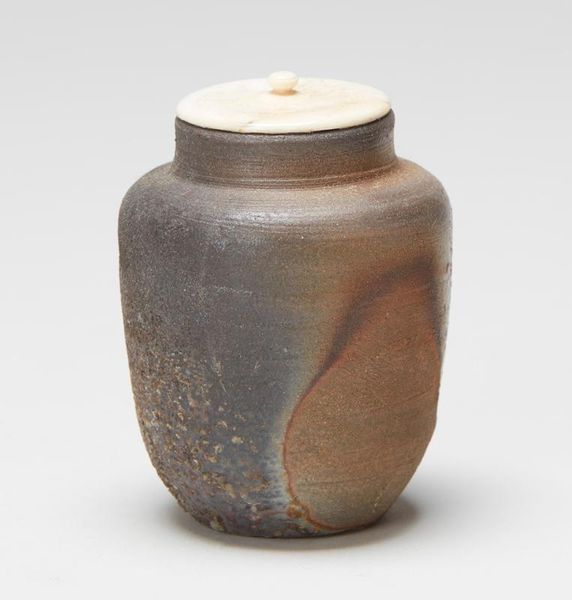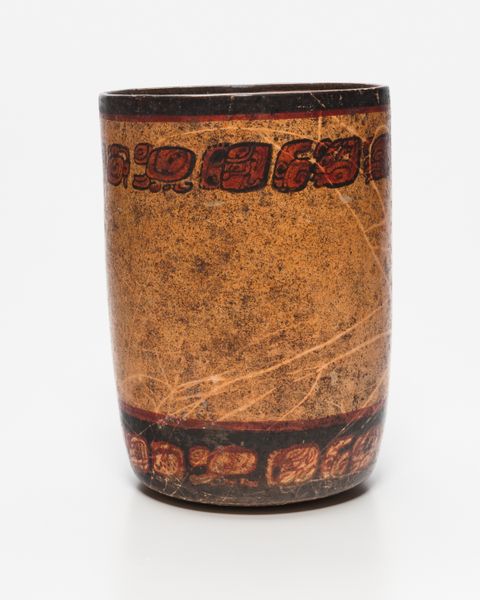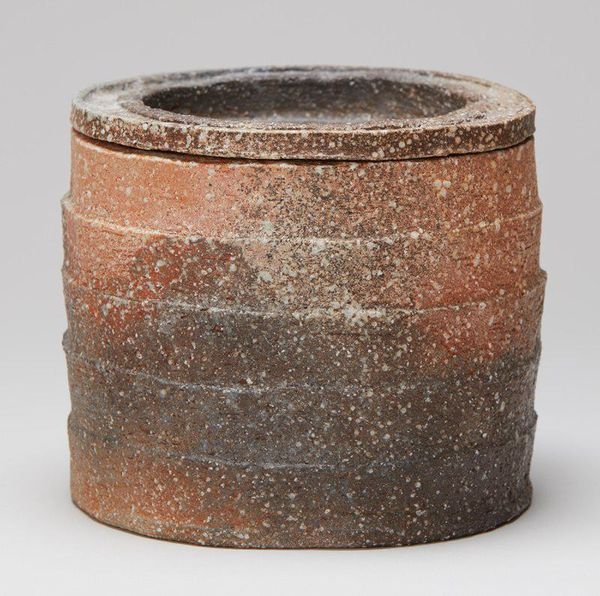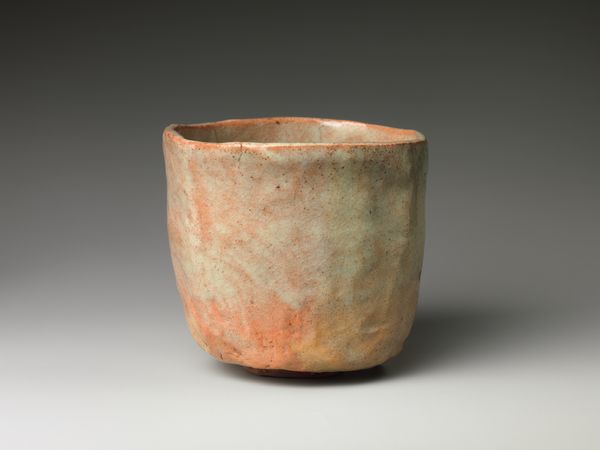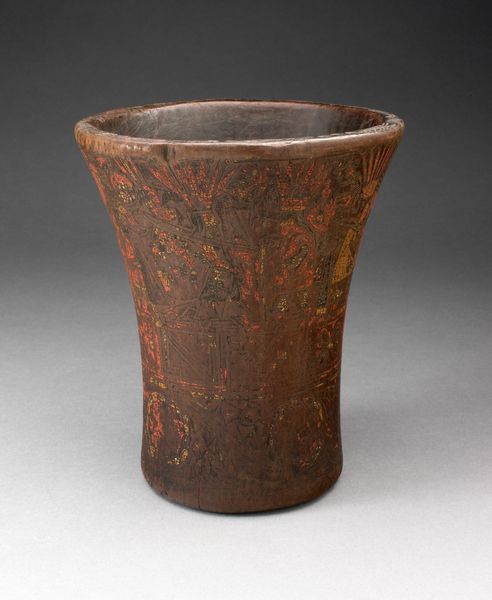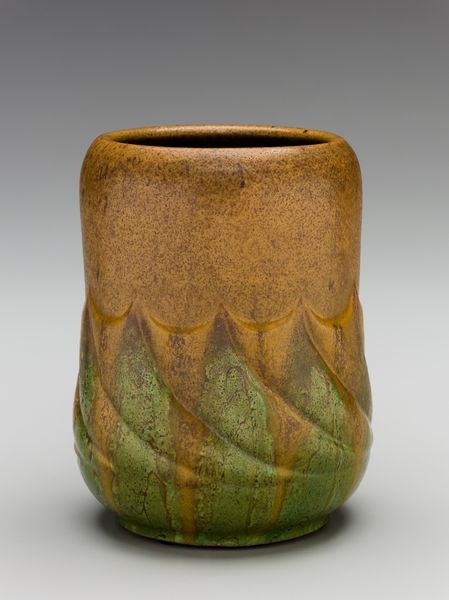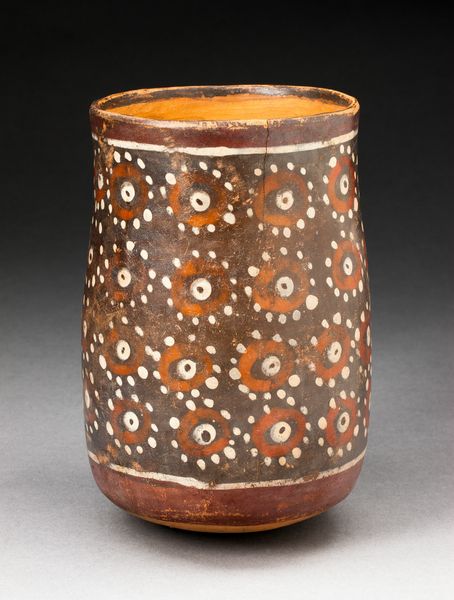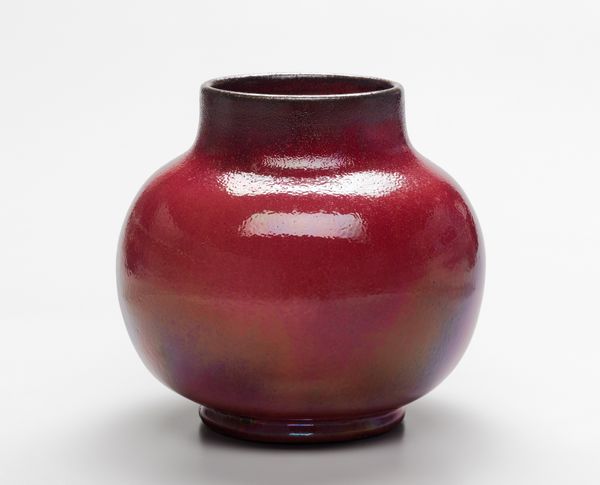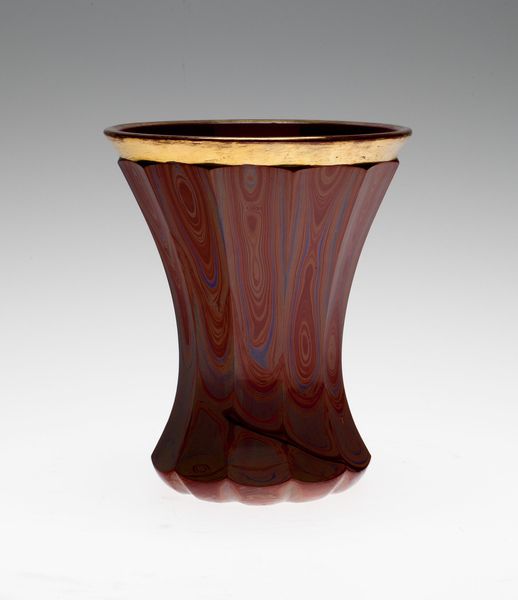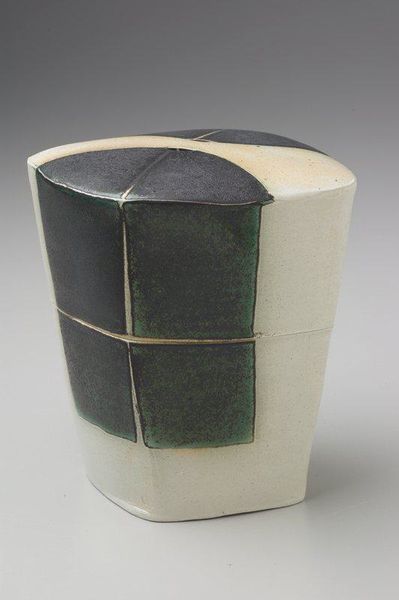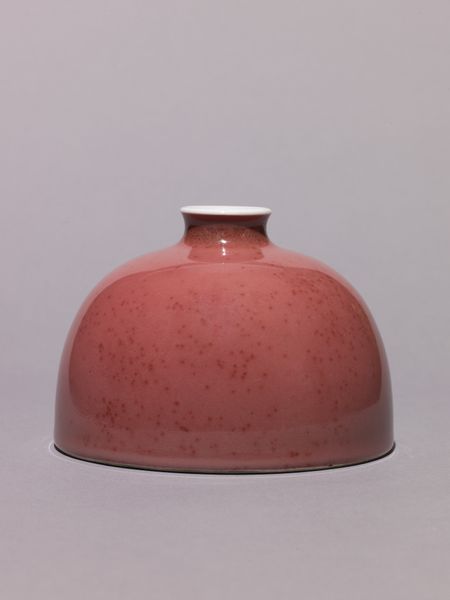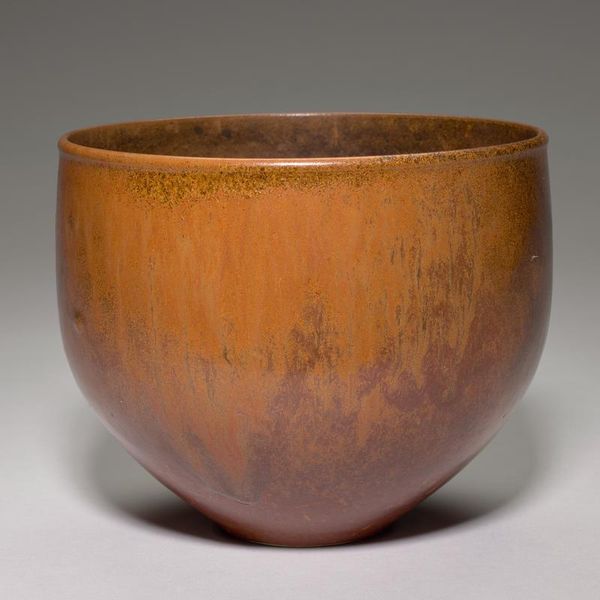
ceramic, wood
#
asian-art
#
ceramic
#
ceramic
#
wood
Dimensions: H. 5 1/2 in. (14 cm); Diam. 7 in. (17.8 cm)
Copyright: Public Domain
This jar was made in Japan by Hon'ami Kōetsu, who died in 1637. It's ceramic, of course: earthenware for the body and lid, with glaze overtop. The shape is fascinating. Kōetsu didn't just throw a regular cylinder on the wheel. Instead, he faceted the clay, almost like a rough-hewn stone. This gives the vessel a feeling of ruggedness, contrasting with the smooth, deep red glaze on the lid. The making process would have involved careful planning and skillful execution, not only in the shaping, but also in the firing, where the subtle variations in color and texture would have emerged. Kōetsu was a master calligrapher and lacquer artist as well as a potter, deeply involved in the artistic and cultural life of his time. What appears at first glance to be a simple object actually involved a complex web of social relations, production, and aesthetic ideas. So, next time you encounter a ceramic object, remember that it represents not just skill, but a whole world of meaning.
Comments
No comments
Be the first to comment and join the conversation on the ultimate creative platform.
